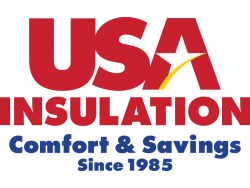Best Attic Insulation for Cold Climates: What Homeowners Need to Know
If you live in a cold climate, your attic plays a crucial role in keeping your home warm and energy-efficient during the winter months. Choosing the best attic insulation for cold climates can help you lower energy bills, maintain a comfortable indoor temperature, and reduce the strain on your heating system.
Top Types of Attic Insulation for Cold Climates
1. Fiberglass Insulation
Fiberglass insulation is one of the most widely used materials due to its affordability and versatility. For cold climates, loose-fill fiberglass insulation stands out as the best option because:
- High R-Value: It can achieve an R-Value of up to 60, providing excellent thermal resistance.
- Durability: Fiberglass insulation doesn't lose its energy-saving capabilities over time.
- Eco-Friendly: It's made from recycled materials and doesn't support mold, decay, or pests.
- Lightweight: It won't put stress on your attic structure, even when installed at high depths.
Fiberglass insulation is a reliable choice for homeowners looking for an effective and long-lasting solution.
2. Blown-In Cellulose Insulation
Blown-in cellulose insulation is another great option for cold climates, especially for hard-to-reach spaces. It's made from treated recycled paper and works well in various areas, such as ceilings and unfinished attic floors. Here's why it excels in cold weather:
- Effective R-Value: With an R-Value of 49, blown-in cellulose provides strong insulation against frigid temperatures.
- Versatility: It's ideal for sealing gaps in attic floors and open wall cavities.
- Performance in Cold Periods: Blown-in cellulose remains effective across all temperatures but excels during the winter months.
Its ability to fill small gaps and irregular spaces makes it a top choice for maximizing attic insulation performance.
3. Spray Foam Insulation
Spray foam insulation is a premium option for cold climates, offering superior thermal resistance and air sealing. While it has a higher upfront cost, the benefits are well worth it:
- High R-Value: Closed-cell spray foam can achieve R-Values between 6 and 7 per inch, making it one of the most efficient insulation types.
- Air Sealing: It expands to fill cracks, gaps, and leaks, creating an air barrier that reduces drafts.
- Moisture Resistance: Spray foam insulation is impervious to water and prevents mold growth.
For homeowners seeking maximum energy efficiency and comfort, spray foam insulation is hard to beat.
What About Batt and Roll Insulation?
While blanket, roll, and batt insulation are commonly used, they're not the best choice for cold climates. These materials:
- Don't fit well in irregular or awkward attic spaces.
- Are prone to compression, which can reduce their effectiveness by up to 50%.
- Absorb moisture, which can lead to mold growth and further reduce their insulation value.
For colder regions, it's better to invest in loose-fill fiberglass, blown-in cellulose, or spray foam insulation.
The Importance of High R-Value for Cold Climates
The R-value of insulation determines how well it resists heat flow. In cold climates, a higher R-value is essential to keeping warm air inside your home and preventing heat loss through the attic. Materials like loose-fill fiberglass and closed-cell spray foam offer the high R-values needed to handle extreme winter temperatures.
Request an Estimate from USA Insulation
Choosing the right attic insulation is key to staying warm and saving money in cold climates. At USA Insulation, we provide a complete multi-point home inspection to assess your home's energy efficiency and insulation needs. From top to bottom, we'll evaluate your attic and recommend the best insulation options for your home.
Ready to improve your home's comfort and energy efficiency?
Request an estimate today and let us help you make your home winter-ready with the best insulation solutions!



